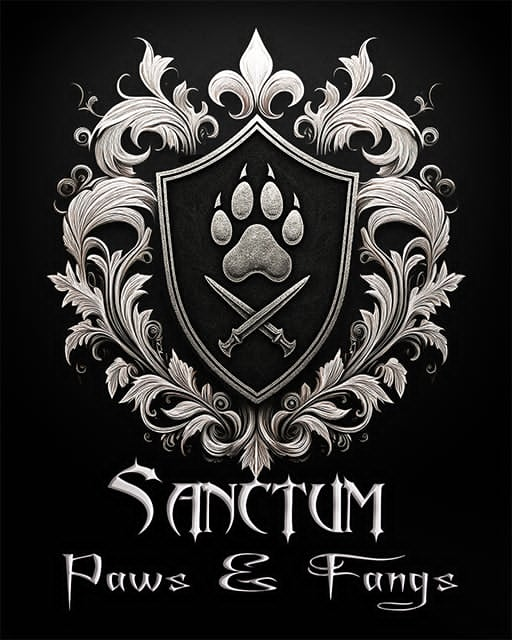Pet food labels may look regal on the outside, but inside the fine print lies the truth about what’s really in your dog’s bowl. At Sanctum Paws & Fangs, we believe every pet parent deserves to read labels with confidence — and a touch of nobility. This guide breaks down the key elements of a pet food label so you can make informed, compassionate choices.
📜 1. The Ingredient List — Where the Truth Begins
Ingredients are listed in descending order by weight, meaning the first few make up the bulk of the food.
Look for:
- Named proteins like chicken, duck, or rabbit
- Whole vegetables and fruits (e.g., sweet potato, blueberries)
- Healthy fats like salmon oil or flaxseed
Avoid:
- Unnamed meats (“meat meal”, “animal fat”)
- Fillers like corn, wheat, or soy
- Artificial preservatives (BHA, BHT, ethoxyquin)
- Synthetic dyes and vague flavorings (“natural flavor”)
📊 2. Guaranteed Analysis — The Nutrient Snapshot
This section shows the minimum and maximum percentages of key nutrients:
-
Crude Protein — Vital for muscle and energy
-
Crude Fat — Supports skin, coat, and metabolism
-
Crude Fiber — Aids digestion
-
Moisture — Impacts texture and shelf life
Note: Wet food contains more moisture, so compare nutrients using a dry matter basis for accuracy.
🧪 3. Nutritional Adequacy Statement — The Royal Seal
This tells you if the food meets standards set by AAFCO (Association of American Feed Control Officials).
Look for:
- “Formulated to meet AAFCO nutrient profiles”
- “Feeding trials substantiate complete and balanced nutrition”
If this statement is missing, the food may not be suitable as a sole diet.
🐾 4. Marketing Buzzwords — Decoding the Drama
Pet food packaging is full of lofty claims. Here’s what they really mean:
|
Term |
What It Actually Means |
|---|---|
|
Natural |
No synthetic additives — but not always regulated |
|
Organic |
Must meet USDA standards — look for the seal |
|
Human-Grade |
Ingredients safe for human consumption — rare in kibble |
|
Grain-Free |
May use legumes instead — linked to heart concerns |
|
With Chicken |
Only 3% chicken required |
|
Chicken Dinner |
Only 25% chicken required |
|
Chicken Dog Food |
Must contain 95% chicken |
🧭 5. Feeding Guidelines — A Starting Point, Not a Rule
Labels include suggested portions based on weight, but actual needs vary by:
- Breed
- Age
- Activity level
- Health conditions
Always consult your veterinarian to tailor feeding amounts to your dog’s unique needs.
🛡️ Final Thoughts
Reading a pet food label shouldn’t feel like deciphering ancient scrolls. With the right knowledge, you can choose food that reflects your values — clean, ethical, and nourishing. At Sanctum Paws & Fangs, we believe every ingredient should earn its place at the royal table.

